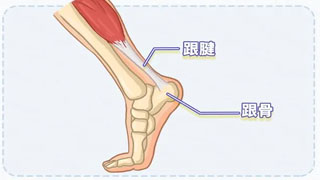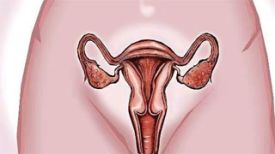
The Achilles tendon is a powerful tendon located behind the ankle joint that connects the calf muscle group to the heel bone. It is composed of the tendons of the gastrocnemius and soleus muscles. The Achilles tendon is surrounded by tendons and has multiple layers of lubrication, mainly composed of long collagen fibers with low elasticity, relatively insufficient blood supply, and slow healing.
Achilles tendon injuries include Achilles tendinitis and Achilles tendon rupture. Tendinitis can be divided into non insertive and insertive types. The former is caused by the rupture and thickening of the fibers in the middle of the tendon, while the latter affects the lower part of the heel and may cause bone spurs. Tendonitis is common in athletes who exercise frequently, with symptoms such as pain in the Achilles tendon or heel, thickening and swelling of the Achilles tendon, and bone hyperplasia the day after exercise. If not treated in a timely manner, it can easily lead to Achilles tendon rupture, affecting athletes such as Kobe Bryant and Liu Xiang's sports career. Excessive use of the Achilles tendon can cause minor injuries, with prolonged recovery due to poor blood supply. Repeated injuries can easily turn into severe injuries, and excessive pronation of the foot can also increase the risk of Achilles tendinitis.
The symptoms of Achilles tendon injury are obvious, such as pain above the heel, especially when stretching the ankle or standing with the toes. If the tendon ruptures, the pain will be severe, and there may be tenderness, swelling, stiffness, audible sounds, bruising, and inability to stand and exert force with the toes.
Achilles tendon injury is commonly caused by rapid acceleration, deceleration, or rotation movements, such as running, gymnastics, dance, football, and other sports, especially in men over 30 years old. Repetitive stress can also damage the Achilles tendon, and non athletes who step into holes or fall from heights may also cause Achilles tendon fractures. The blood supply to the upper segment of the Achilles tendon comes from the posterior tibial artery and the fibular artery, while the lower segment comes from small blood vessels at the heel bone. High intensity exercise or improper exercise can cause insufficient blood supply and lead to rupture. The incidence rate of Achilles tendon rupture is high in industrialized countries, mainly in young people, and most of them are men. The number and quality of blood vessels will deteriorate with age after adulthood.
There are many risk factors for Achilles tendon injury. Wearing high heels can compress tendons; Flat feet stretch muscles and tendons; Tight leg muscles or tendons, bone spurs, increased exercise time or intensity, new exercise methods, uncomfortable shoes, exercising on uneven surfaces, taking certain medications, and developing chronic diseases can all increase the risk.
When diagnosing Achilles tendon injury, doctors may mistake it for ankle sprain. The correct diagnosis starts with a physical examination, observing walking or running, and may also perform a calf compression test to check the range of motion. Imaging examinations such as X-rays or MRI may also be used to determine the type of injury and treatment method.
There are various treatment methods for tendinitis. During the acute phase, training should be stopped and a mixture of ice and water should be applied to control swelling, with each application lasting no more than 20 minutes. After applying ice, you can use muscle effect patches to help reduce swelling and prevent injury. Stretching can assist in loosening the fascia and muscles connected to the Achilles tendon, and the extent should be small. If you slowly stretch the triceps surae, you can stretch the gastrocnemius or soleus with front and back lunges, or you can relax with a foam axis or a fascia ball, or you can ask a physiotherapist to loosen it with a fascia knife. When pain and inflammation are severe, shock wave instruments can be used. Rehabilitation training is very important, such as eccentric contraction of the calf triceps, finding pedals or steps, stepping on them with the forefoot, slowly and uniformly dropping the heel, and then lifting it up. Repeat this process about 10 times a minute, for 3 minutes a day, and keep it within the painless range. Achilles tendon tear requires timely medical attention, and surgery is a common choice. The younger and more active the patient, the more likely the surgery is. The Achilles tendon will be sutured within 4 weeks, and sometimes other tendons need to be sutured for reinforcement. 80% -90% of surgeries are successful. Older people or those with less activity or partial tearing may not undergo surgery, but may undergo physical therapy, stretching exercises, etc. They may need to wear casts, walking boots, etc., but the recovery time is long and the risk of re injury is high.
The recovery of Achilles tendon injury takes several months, depending on the severity of the injury. After recovery, one can still move, but it should be done gradually. Only when the leg can move freely, feel as strong as the uninjured leg, and exercise without pain, can the original level of physical activity be restored. Otherwise, it is easy to be injured again and cause long-term pain. Low intensity exercises such as swimming and cycling can be changed.
Preventing Achilles tendon injury can stretch and strengthen the calf, reduce uphill running, wear well supported and comfortable shoes, and stop exercising when the calf or heel is painful and tight.


